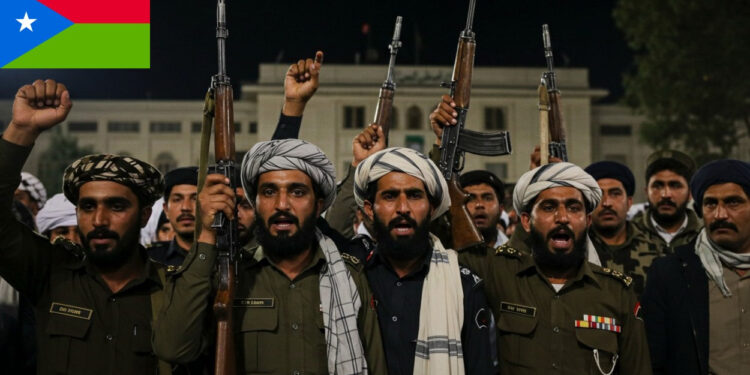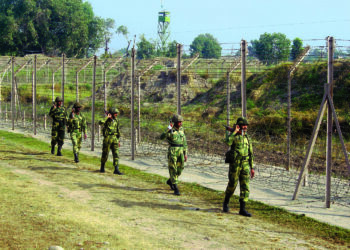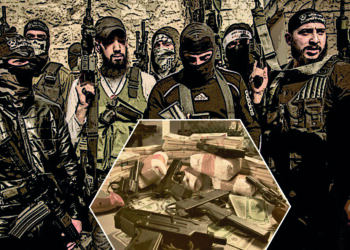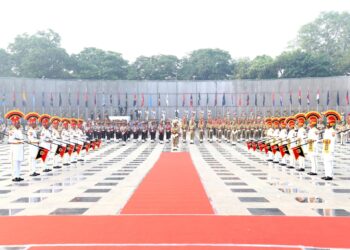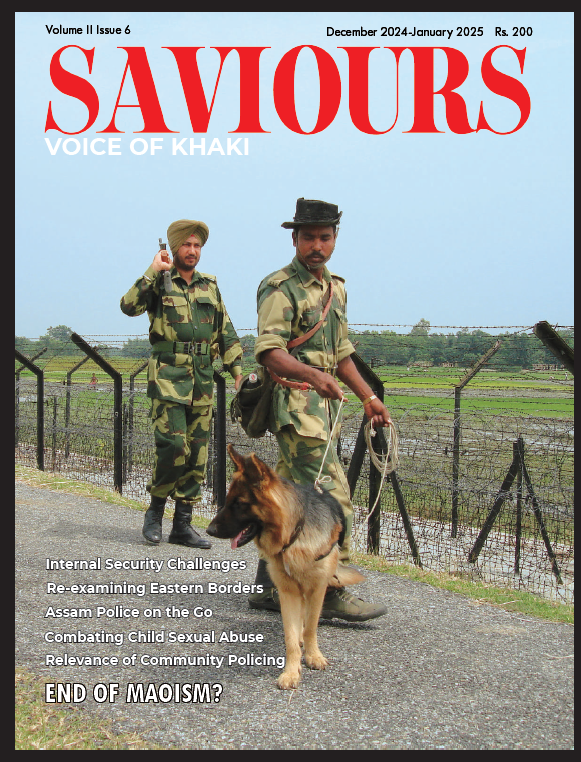Those who saw the Pakistan’s Field Marshal Asim Munir’s visit as only a courtesy visit on occasion of retirement of the outgoing United States Central Command (CENTCOM) Commander General Michael E Kurilla, and assumption of the command by Admiral Brad Cooper, must be in for a rude shock by the US state department’s proscription of the Balochistan Liberation Army (BLA) engaged in a freedom movement as a Foreign Terror Organisation (FTO). The real motive of Munir’s visit went beyond merely attending the ceremony, extracting what he could while the “honeymoon” is at its peak.
The Baloch Issue
Balochistan has been a thorn in Pakistan’s flesh ever since the Kalat state was militarily annexed by Pakistan in 1948, after Jinnah, who had initially endorsed Kalat’s independence after the Partition, reversed his stance, demanding Kalat’s accession. The nationalist movement, which dates back to the pre-1947 era, continues to torment the Pakistani state.
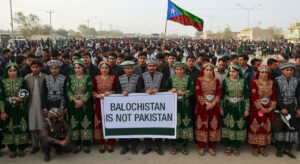
Baloch people have long suffered political victimisation, and their resistance to state oppression, extrajudicial killings, disappearances of their political leaders, and human rights violations has resulted in continuous conflict. Their demands for justice and accountability have gone unaddressed. BLA is the primary group that is engaged in armed resistanc
e against the Pakistani state.
Balochistan is endowed with rich reserves of minerals, rare earths, gas, and oil. Ninety percent of Pakistan’s copper is produced from the Baloch quarries. Gwadar Port, a strategic national asset for Pakistan, is situated in Balochistan, and the $60 billion CPEC corridor, China’s ambitious project to access the Arabian Sea, traverses Balochistan. However, the benefits of this resource extraction and development do not necessarily get distributed among the poor Baloch population or are

not ploughed back into the region’s growth, leaving the largest province the least developed. There have been several attacks in the past on the infrastructure, foreign workers and projects along the CPEC corridor in Balochistan.
Marginalised culturally, politically and economically, the nationalist movement seeks political autonomy and greater control over the region’s affairs and resources.
The US State Department has formally designated the BLA and its hit unit, the Majeed Brigade, as an FTO. The statement (dated 11 August 2025) signed by Secretary of State, also lists the past proscription of BLA in 2019 and refers to some recent BLA actions like the March 2025 hijacking of the Jaffar Express that killed 31 people and held hundreds hostage, the suicide attacks near Karachi airport, and at the

Gwadar Port Authority Complex to declare BLA as a Specially Designated Global Terrorist entity.
It may be recalled that Pakistan has repeatedly blamed India for providing support to BLA and the Baloch cause. Pakistan accused India of involvement in the Jaffar Express hijack even though the BLA fighters had demanded “unconditional release of Baloch political prisoners, forcibly disappeared persons and national resistance activists” and the state media had claimed that the BLA insurgents were “in contact with their facilitators in Afghanistan”.
Ramifications of the Ban
The declaration of BLA as a designated terror outfit has serious ramifications for the supporters and sympathisers of the Baloch cause. The FTO label criminalises all material support to the Baloch resistance movement under the guise of the BLA or its aliases, such as the Majeed Brigade. In addition, the ban chokes off finance and logistics, impacts mobility and immigration, and subjects them to US surveillance and investigative scrutiny.
However, there is a possibility that the BLA may take a leaf out of the proscribed terror outfits like Lashkar-e-Taiyba that have repeatedly changed nomenclature to escape sanctions and to continue their terror agenda at the behest of Pakistan’s Inter Services Intelligence (ISI). Nationalist movements across the globe, with ideological clarity and mass support, have hardly been quelled by strong-arm tactics. India, however, is a shining example of dealing with militancy and insurgency by mainstreaming them through political integration.
Another downside of this ban is that the humanitarian concerns of the Baloch people, extrajudicial exterminations, disappearances and state repression may largely go unreported, and the vast mineral resources may be up for grabs by foreign mining giants, mainly American and Chinese.
This ban also hands a lever to Pakistan to malign India at international fora for support to BLA, albeit without evidence, and push for an anti-India rhetoric.
Nuclear Sabre-Rattling
Pakistan is known to brandish the nuclear sabre at the slightest provocation. However, the recent nuclear diatribe against India from Tampa, though in a private function hosted by the diaspora, on the soil of a friendly and strategic partner like the USA, does not augur well. Munir has also challenged that any hydrological projects implemented by India on the Indus basin after the suspension of the treaty will be destroyed by the missiles launched by Pakistan. Pakistan feels emboldened to make such cheap remarks after an ex parte award from the Hague based Permanent Court of Arbitration on Indus Water Treaty which declared that India must generally “let flow” the waters of the Western Rivers—Indus, Jhelum, and Chenab—for Pakistan’s unrestricted use, and that any Indian projects on these rivers must strictly conform to the treaty’s technical design limits with reference to pondage, configuration of gated spillways, low-level outlets, and turbines. Munir went on to outline his future strategy for disabling India’s energy infrastructure, hinting at the Jamnagar refinery as a potential target.
The aftermath of the OP Sindoor has seen uneasy India-US ties and growing US-Pakistan military bonhomie. During the second visit, Munir also had discussions with the Chairman of the Joint Chiefs of Staff, Gen. Dan Caine, on “matters of mutual professional interest” and invited Gen. Caine to visit Pakistan. Earlier, on August 2, the US Central Command hosted a conference in Islamabad for the chiefs of defence and leaders from Pakistan, Kazakhstan, the Kyrgyz Republic, Tajikistan, and Uzbekistan.
Munir’s Resurrection
Before the India-Pakistan hostilities, Munir was staring at the worst approval graph for any army chief of Pakistan. In a favourable turnaround, his and his Army’s approval ratings have soared exponentially with Asim Munir assuming the mantle of the Field Marshal of Pakistan’s Army. There is no doubt any longer as to who calls the shots in Pakistan.
Munir has also successfully contained the threat from Imran Khan’s party, Pakistan Tehreek-e-Insaaf (PTI). The visits of the party supremo’s sons to the USA yielded no traction. The recent protests by the party were more like a whimper compared to the mass uprising seen a year or so ago.
The Taliban regime in Afghanistan was another major concern for Pakistan. With the USA by its side, Munir finds himself better equipped to deal with its north and north-western neighbour, allegedly harbouring anti-Pakistan separatist groups, depredations of Tehrik-e-Taliban Pakistan (TTP) in the bordering areas of Pakistan, refugee influx and Baloch nationalists.
Munir may have killed two birds with one stone. Pakistan has offered its massive oil reserves and rare earths in the Balochistan area to the US for exploration. American companies will demand increased security for their workers, which will indirectly benefit Chinese interests in a safe CPEC corridor, opening the Arabian Sea to China.
India, USA & Pakistan
The US administration, headed by Donald Trump, is palpably incensed by India’s not acknowledging its role in ending the four-day hostilities. In contrast, Pakistan has gone on to recommend the Nobel Peace Prize for Donald Trump for bringing peace to the world. A direct fallout of India’s dismissal of the US role was the release of a large bailout tranche of cash by the IMF to Pakistan. Many believe these funds will be utilised in targeting India.
The trade agreement between Pakistan and the USA, cryptocurrency deal and Trump’s euphoric announcement of vast oil reserves of Pakistan, indulging Munir to lunch in the White House and public acknowledgement of Pakistan’s role in fighting terrorism are some of the unmissable pointers to the rising importance of Pakistan in the current Afghanistan and Iran situation in the US tactical calculus.
Designating the Resistance Force (TRF), which had claimed responsibility for the Pahalgam terrorist attack, as an FTO can be seen as an act of balancing the diplomatic scales. The US statement had named the TRF as a “front and proxy” for the Lashkar-e-Tayyiba (LeT), which Pakistan claims to have rendered “defunct”.
The USA has called India the “tariff king” and slapped a 50% tariff on the bogey of buying Russian oil, completely ignoring the import of Russian energy by the US, China and the European Union without similar sanctions. This discriminatory imposition of tariffs defies a rule-based world order.
What India Should Do
First, on the Baloch front, India needs to maintain its principled stance of opposition to all instances of terror anywhere on the planet earth. India should, however, delicately differentiate between advocacy of freedom of expression and human rights and abetment to terror.
Second, Pakistan is going to escalate terror attacks in the union territory of J&K, as is evidenced by the continued engagements of security forces with the Pakistan-trained and sponsored terrorists. Infiltration is generally high after the opening of the snow-clad passes and before the onset of winter. India should meticulously pick all irrefutable scientific evidence of Pakistani involvement in the terror attacks, fast-track the investigation, and prosecute perpetrators and share it with the counterpart, world media and international bodies to highlight the role of Pakistan as the epicentre of global terror.
Thirdly, India should also be prepared for the increased shipments of the US military hardware and spare parts reaching the Pakistan Army, further bolstering its war capability and prepare accordingly.
Fourthly, references to Op Sindoor in election campaigns should be restricted to India’s resounding victory, without crediting who and how the hostilities were stopped.
Fifthly, India should intensify its diplomatic engagement with the USA; after all, the US is India’s most valuable trading partner, shares a similar democratic ethos, and is committed to free trade. In a message on the occasion of India’s Independence Day, the US statement highlighted the strategic importance of India in the Indo-Pacific region and its long-term engagement in trade, technology, innovation, and space.
Sixthly, the present unease in relations should not jeopardise the next round of trade talks and long-term objectives. India should also reach out to friendly countries and multilateral blocs, in particular, to share its concerns about terrorism and recent developments in the neighbourhood.
Seventhly, India has thus far avoided any retaliatory tariffs against the US. We should tread this path carefully in the larger national interest and to sustain economic growth.
It may be a tactical compulsion of the USA to humour Pakistan at the moment. We need to examine India-US relations beyond the India-Pakistan prism for sustained and deeper strategic, technology and economic engagement. In short, we need to agree to disagree on Pakistan.


